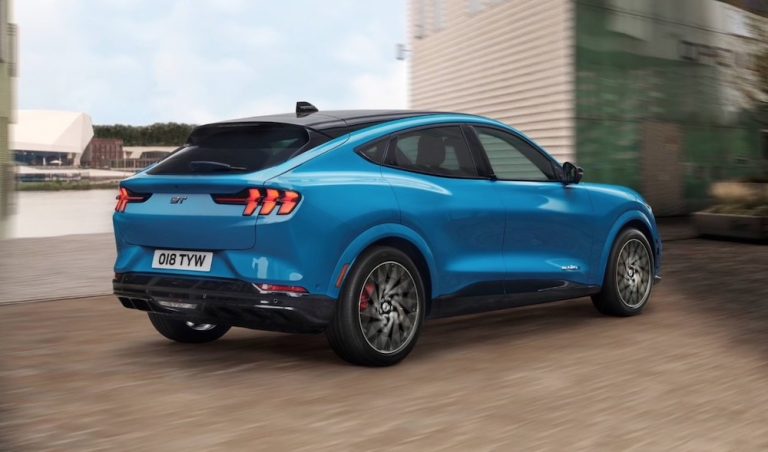Electric Cars: The Basics
For those of you new to zero-emission electric driving, we recommend a read of the following articles:
Sign up to the e-zoomed Electric Living newsletter
What Is Regenerative Braking In Electric Cars?
Two words are fast emerging in the narrative of transportation, not only in Ireland, but across a number of global markets: electric and efficiency! As electric driving becomes mainstream, automotive manufacturers continue to develop ways to increase the efficiency of an an electric vehicle (EV), to include both, plug-in hybrid electric vehicles (PHEVs) and battery-electric vehicles (BEVs).
Most, if not all of the recent introduction of electric vehicles incorporate regenerative braking, to increase the pure electric range for the electric car. So what is regenerative braking in an EV? And how does it work? In general, a moving vehicle, to include, an internal combustion engine (ICE) or an electric vehicle, wastes or dissipates energy, in particular, when braking.
Braking works by using friction. When the brake pedal is pressed to slow down the vehcile, the brake calipers, in turn, press on the brake discs which creates friction to slow the wheels. This process also creates kinetic energy.
Regenerative braking, also known as regen braking/ brake recuperation, is a process of capturing the wasted energy from a vehicle, to be reused (recycled). In the case of electric driving, the ‘captured’ energy is reused to increase the pure electric range of the EV. In the case of conventional petrol and diesel vehicles, the captured energy is reused to charge the small onboard battery, that in turn is used to power the ancillary systems of the ICE vehicle.
Regenerative braking converts the captured kinetic energy into chemical energy for storage in an onboard high-voltage EV battery. In general terms, the kinetic energy in a moving vehicle is a product of the mass and speed. A heavier and faster electric car (all else being equal) will have more kinetic energy. If this energy is not captured it is simply lost as ‘heat’ to the atmosphere. In older generation cars, during braking, all the energy is wasted.
In electric cars, the onboard electric motor is used to propel the car i.e. to drive the wheels. Electric motors run in two directions, forward and backward. The forward motion moves the wheels. In the case of regen braking the onboard electric motor is ‘reversed in direction’ to recharge the onboard EV battery with the captured kinetic energy (i.e. it generates electric power, which is fed to the EV battery). In an electric car that is using regenerative braking, you can feel the ‘regen effect’ kicking in when the foot is taken off the accelerator’ as the EV brakes itself/ de-accelerates.
The ‘efficiency’ of regenerative braking varies depending on a number of factors, to include, the type of plug-in electric vehicle, the driving mode, the driving profile, the road etc. However, in most cases regen can harness between 60% to 80% of the kinetic energy displaced during braking.
Electric cars usually offer a number of regenerative braking profiles to suit the needs of the user. In general, the more ‘aggressive’ the regen profile in an EV, the greater the captured kinetic energy, the more improved is the efficiency of the EV i.e. the better is the pure electric range. For example in the all-electric Nissan Leaf, the e-Pedal driving mode is a ‘one-pedal’ system i.e. at lower speeds the force of regenerative braking does not require the use of a brake pedal.
In regards to e-range increase, it must be noted that regenerative braking will not result in significant increase in the EV range. It certainly helps, but at marginal levels. What regen does instead, is reduce the inefficiencies of constant braking. Regen also has other advantages, to include, reducing the wear and tear on braking automotive components. For urban driving, which requires more frequent acceleration/ de-acceleration i.e. braking, the benefit of regen braking is most leveraged.

Regen braking is incorporated in all types of electric vehicles, not only family electric cars. The fast emerging segment of commercial pure electric vans also incorporates regenerative braking to improve vehicle efficiency. Regen braking is also used in full hybrid and mild hybrid vehicles (i.e. self-charging hybrid vehicles that are not charged via an external source, like plug-in electric cars).
While e-zoomed uses reasonable efforts to provide accurate and up-to-date information, some of the information provided is gathered from third parties and has not been independently verified by e-zoomed. While the information from the third party sources is believed to be reliable, no warranty, express or implied, is made by e-zoomed regarding the accuracy, adequacy, completeness, legality, reliability or usefulness of any information. This disclaimer applies to both isolated and aggregate uses of this information.

























